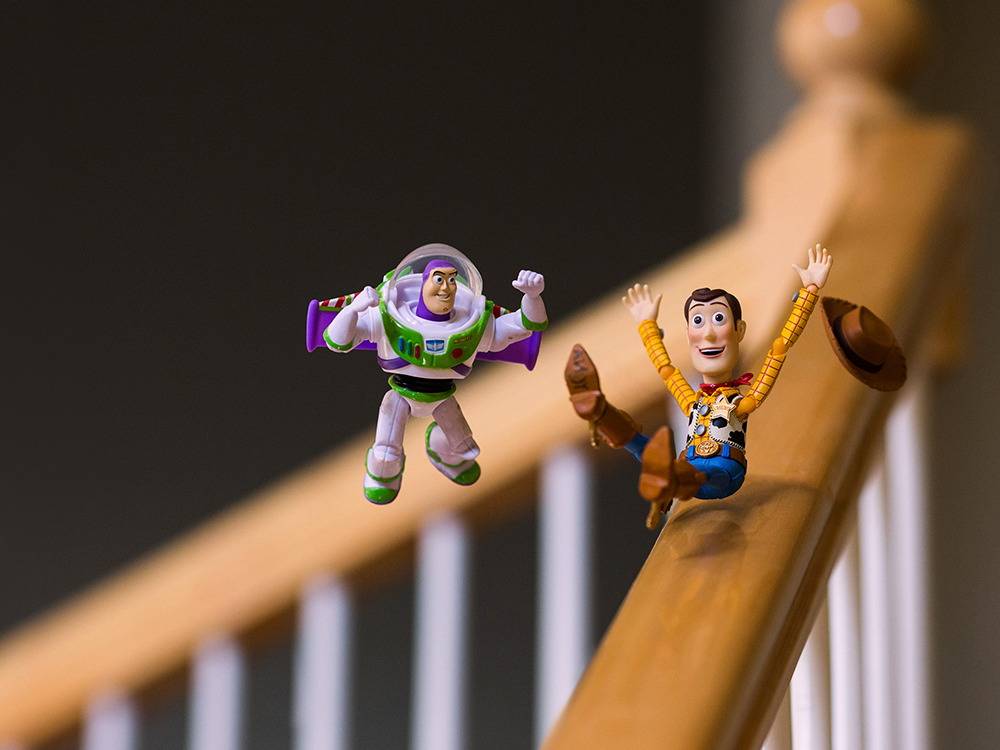
In Toy Story, beloved kids’ toys only come to life when nobody is looking. Except when Mitchel Wu gets his hands on them.
Wu is a Los Angeles-based professional toy photographer. He uses kids’ playthings to create engaging stories through images that capture the illusion of motion and emotion where none exist. An ex-wedding photographer, Wu has since divorced his day job in favor of bringing toys to life. He’s created images for Warner Bros. Entertainment; Mattel’s Ever After High, Monster High, Scrabble, UNO, Hot Wheel’s 50th Anniversary; and IAmElemental Toys.
Wu captures moments that are a cross between effervescent fantasy and wispy daydreams. His technique makes you feel as though you are actually seeing something real—making you second-guess yourself that no, these figures aren’t actually moving on their own. Wu’s ability to animate toys and games, and put them in playful situations varying from flying liquid to moving debris, combines lighthearted situations with images that are stunningly realistic. For him, it’s not about the toy, but more about the story.
The Pop Insider caught up with Wu to talk about his photo aesthetic, his inspiration, and how he got started with toy photography.
Pop Insider: How did you go from wedding photographer to toy photographer?
Mitchel Wu: I photographed hundreds of weddings over the course of eight years. During that time, my daughter went through elementary school and junior high, and by 2015 was in high school. She’s a competitive swimmer and all of her swim meets are on the weekends. The unfortunate part about wedding photography is that 95 percent of weddings take place on weekends, so I was missing out on a lot with my kid and wife. It was toward the end of 2015 that I decided to stop shooting weddings because I knew I only had a limited amount of time left with my daughter before she graduates and leaves for college. I had no plans for what to do after wedding photography, but fortunately it was around the exact same time that I discovered toy photography. My nephew was shooting toys, and he asked me to come along to shoot with him one day, and everything just kind of fell into place from there.
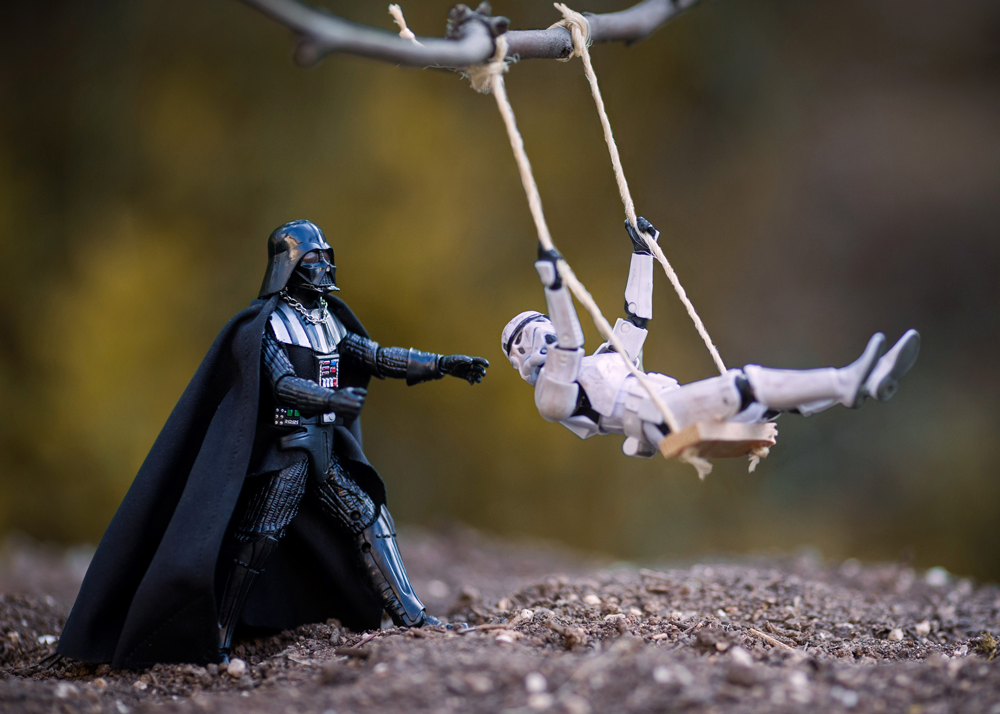
PI: What was your first-ever photo in this style and what was the inspiration for the first time?
MW: The very first picture I took was of some Stormtroopers. I was never even aware of toy photography—in fact, the first time I saw it on social media I thought it was incredibly bizarre. There are a lot of different kinds and levels of toy photography, ranging from pretty good images to some really strange and cheesy ones. Everyone does his or her own thing, which is what makes it so fun.
My nephew and I finally got together to shoot. Coming from wedding photography, I had more than enough gear to shoot toys, but what I didn’t have were the toys. I borrowed some samurai stormtroopers from him that first day and we shot them in a nearby park. That’s how it all started. On that first day at the park it was more about taking photos of static characters and getting a feel for photographing action figures. But once I got home and was able to experiment and play with it, it really progressed pretty fast to where I was doing pretty cool shots of Stormtroopers falling off of cliffs, water splashes, or dirt and debris flying around characters. It moved pretty quick.
I started in the fall of 2015 and I would say that as soon as I took my first photo, I really saw the potential of what you could make toy photography be as far as a career. I spent the first year learning the different techniques involved in how to do some of the practical effects that you see in my images, trying to develop a style, and working on my storytelling. I spent a good solid year on that before I actually started pursuing and booking some client work. My first official client, IAmElemental, commissioned me to create images around its stunning line of female action figures.
I also found that a lot of the experience I gained with wedding photography was transferrable to toys. There’s so many facets to weddings, and one of them is capturing details such as the wedding ring, gowns, and shoes in a beautiful, artful manner. That kind of technique really transferred over into toy photography.
PI: Take us inside your creative process. How do you come up with ideas for your photos?
MW: Ideas can come from anywhere, but a lot of them come from pop culture and movies that are out or have been out, children’s stories, observing life, and things that happen in my own life. It comes from so many different places, but generally pop culture and nostalgia are areas where a lot of ideas can come from.
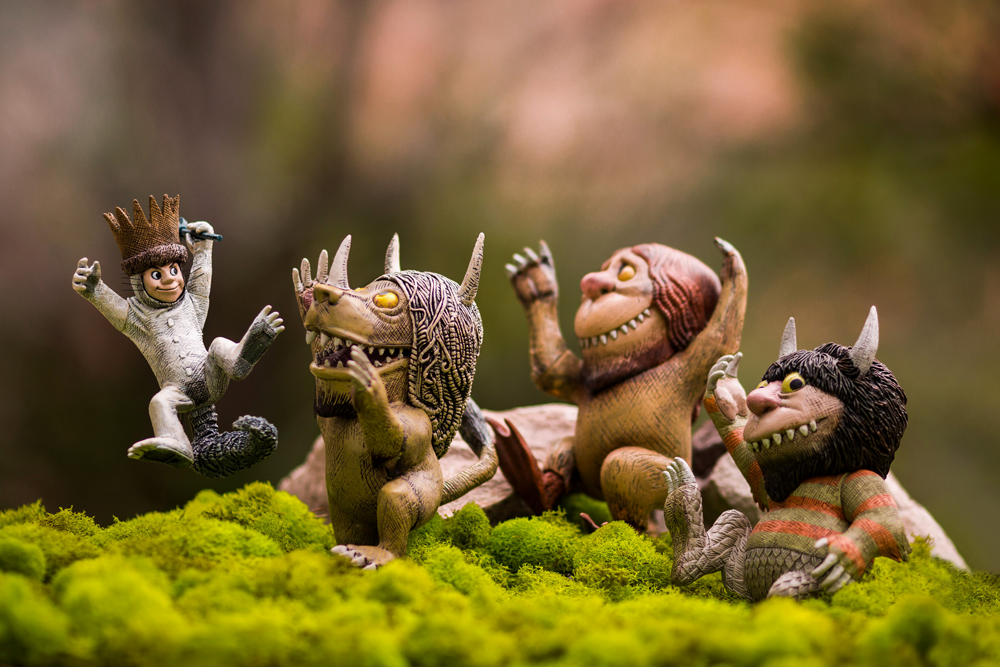
PI: How does your daughter influence what you do?
MW: It goes back to the nostalgia. When my daughter was growing up—kids love to watch a lot of movies, and she was no exception—we watched Toy Story and other Disney•Pixar movies a million times. If you look at my images, you see a lot of Toy Story because it brings me back to watching those movies with my kid when she was growing up, which was a really special time. I also have some figures from the story Where the Wild Things Are, and it was a similar concept because that was one of her favorite bedtime stories. I didn’t even know toys existed from that children’s story until I saw somebody else taking photos somewhere else and thought they were really cool. I hunted for them on eBay and found them. It’s those influences—the things we used to do together when she was growing up and how the movies she watched, the stories we read, and the situations she got into, apply to the stories that I’m creating through toy photography.
PI: *fangirls over Toy Story*
MW: It’s amazing because the main characters are toys. When I’m shooting Stormtroopers or Marvel characters, I have to be conscious of their surroundings and scale because I’m trying to portray them in the worlds they live in. Whereas with Toy Story I’m free to roam around my house and shoot in the kitchen or my kid’s bedroom, for example, because they’re portrayed as actual toys in a house, so they fit perfectly already.
PI: What are some of your favorite kinds of photos to shoot?
MW: I don’t have a favorite type of photo to shoot, but the kinds of photos I like to shoot are ones that have a strong story behind them.
In 2017 I was fortunate to have Mattel as a major client, and over the course of the year I created hundreds of images for them. I started off by shooting some their Monster High and Ever After High dolls. Then they asked me how I would feel about shooting some things that were not doll or toy related. It was something new for me, and I’m always up for new challenges, so Mattel gave me the games Uno and Scrabble to create images around for their social media.
When I started shooting Uno and Scrabble, putting them in different stories and situations, I found myself enjoying the process as much as I did when I photographed action figures. It was an important validation for me that it’s not so much about a specific toy or game, but about the story I’m trying to tell.
There are a lot of hobbyist toy photographers that will only shoot something like Star Wars or Marvel action figures, and that’s cool because that’s their passion, but for me creating stories are my passion, so you’ll see a wide range of toys and figures because of that. That’s what keeps it interesting for me.
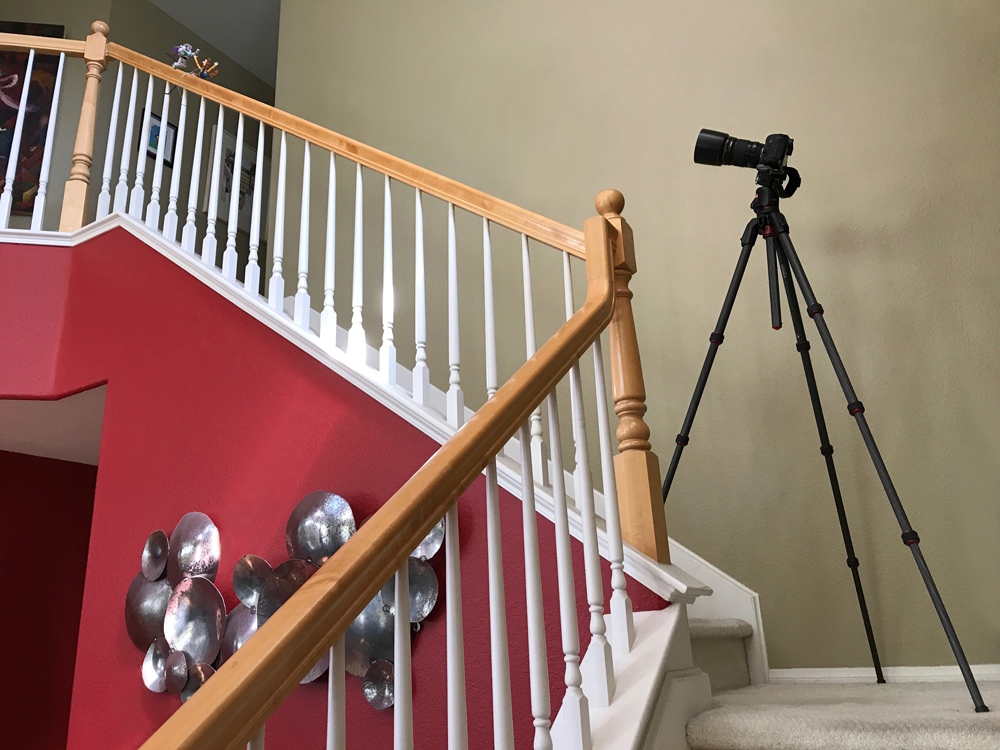
PI: What photo are you most proud of? Can you walk us through concept to execution for it?
MW: One of my all time favorite images is of Woody sliding down the stair banister with Buzz Lightyear flying (falling with style!) right next to him, cheering him on. Those stairs are in my home, a house I’ve lived in for more than 20 years. I’ve walked up and down those stairs a million times, and every time I walk down them I have my hand on that bannister. So, I’m always thinking about what I can shoot next and what’s the next story I want to tell. I don’t even know how it happened, but that idea just popped into my head, and then it just seemed so obvious because when kids see a banister or railing, their first thought is to slide down it. It seemed like the most natural thing to do, but for some reason I hadn’t noticed it in the years since I began photographing toys.
I love that image partly because it was so elusive, but mostly because when I look at it, I feel there’s this unbridled joy on Woodys’ face that exemplifies hanging out and playing with a really good friend, having a great time. It just looks like he’s having the time of his life.
That was a pretty straightforward setup and shot. I set up my Manfrotto tripod on the steps, put the characters into position, and then snapped the images. It was pretty straightforward, but like most cases, the idea was the hardest thing to come by.
That’s my favorite image, but if I was to say what makes a great image for me, it’s an image that gets people to see characters in a different way. A good example is an image with two figures from the movie Alien that I created for this past Mother’s Day. These aliens, called xenomorphs, are terrifying, bloodthirsty monsters. I had Mother and child xenomorphs sitting on a rock in a lake and it’s a really tender moment. The toy manufacturer doesn’t even make a xenomorph child so I had to create the child using Photoshop. A lot of people were moved by the image and it received a lot of, “Aww, that’s so cute” kind of comments, but I can guarantee you that nobody has ever said that about these xenomorph creatures before. I love that image because I took these really fearsome killing machines and got them to pull on people’s heartstrings. It’s that kind of image in general that I strive for, and when an image succeeds on that level they instantly become some of my favorites.
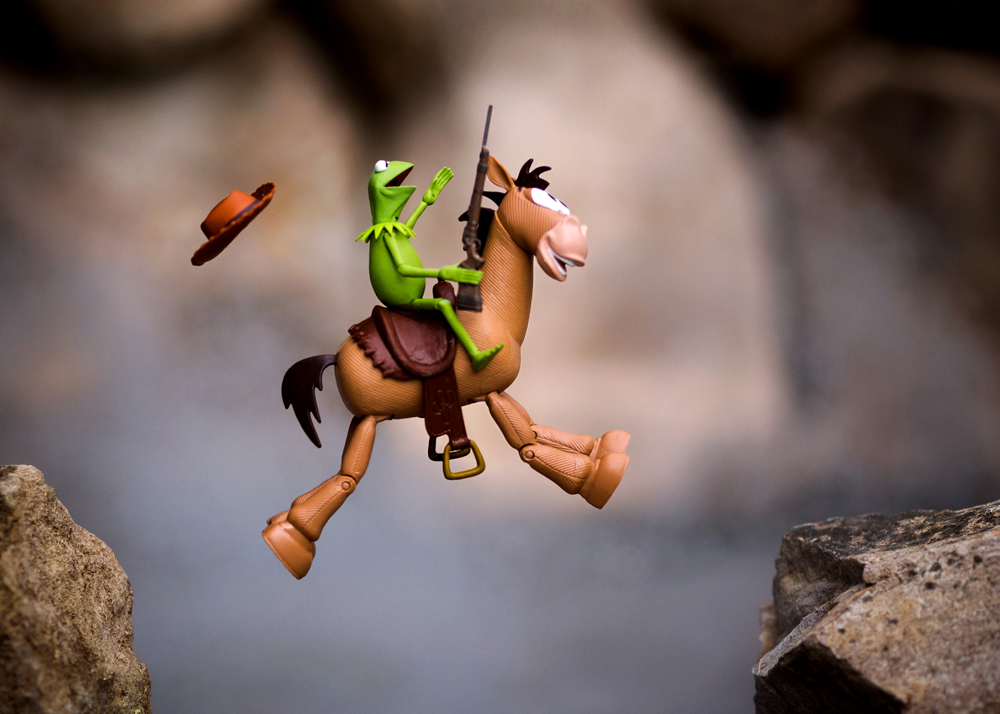
PI: Where do you get the toys from?
MW: I get a lot of my toys off of Amazon, just because it is so convenient, but I get the harder to find items from eBay, comic shops, specialty toy stores, or just by buying from other toy enthusiasts. Once in a while I’ll attend a swap meet and I’ll find something there, or toy meet ups where people have booths and they sell old toys.
One of the reasons I’ll buy a toy, and one of the things I’ll think about before buying it, is what kind of potential they have to tell stories. I need to like a toy before I purchase it, and usually it’s because of the nostalgia I discussed earlier, but I’ll also consider how much storytelling potential the toy has.
A good example of this are some toys I bought from The Lion King, another movie my daughter and I watched dozens of times together. These were inexpensive, fixed-pose toys with no articulation. I first created an image influenced by the iconic scene where Rafiki holds baby Simba over his head atop Pride Rock. Later that same month, not satisfied with telling just one sanguine story with that toy, I came up with this slightly darker image of Rafiki, Simba and a bloodthirsty Rancor (from Star Wars), an image that went on to become one of my favorites.
PI: How has the response been on social media?
MW: It’s been truly amazing. I found that toy photography lives on Instagram. There’s an entire worldwide community where you can find people taking pictures of their toys. It’s really cool because in the few years I’ve been doing this I’ve made some amazing friends from different corners of the globe, and have followers on nearly every continent.
The response has been fantastic. A lot of people that follow me are toy photographers, but the majority are people that have found me through other avenues, whether it’s magazine articles or other unrelated groups on social media. It’s been cool to see all these different eyes coming to my work. A lot of kids find their way to my social media pages as well, often through their parents, so the one thing I’m always conscious of is to keep my work G or PG rated and family friendly. With that said, my humor can really get out there, in a goofy way—like in a recent photo where I shot a Rocky figure holding a chicken over his head and the chicken is laying eggs right into his mouth, shells and all. It was inspired by an iconic scene in the movie where Rocky is training and drinks a couple of raw eggs. Clearly I’m not really thinking about an audience when I post something like that—it’s just a fun, warped idea that I’m doing for myself. I know it’s going to be super goofy and I’m not really sure if anybody is going to like it, but I’ll get a kick out of it. And it’s true because when I was setting it up and put the chicken over Rocky’s head, I started cracking up! But ultimately I had no idea how people were going to respond to it (they ended up loving it).
Wondering about what people will like is always in the back of my head, but ultimately I have no control over that. Sometimes you think something is going to resonate with an audience and it doesn’t, and sometimes you’re on the fence about an image but post it anyways, and the response is really strong. I just try to follow what’s in my heart and have fun with it.
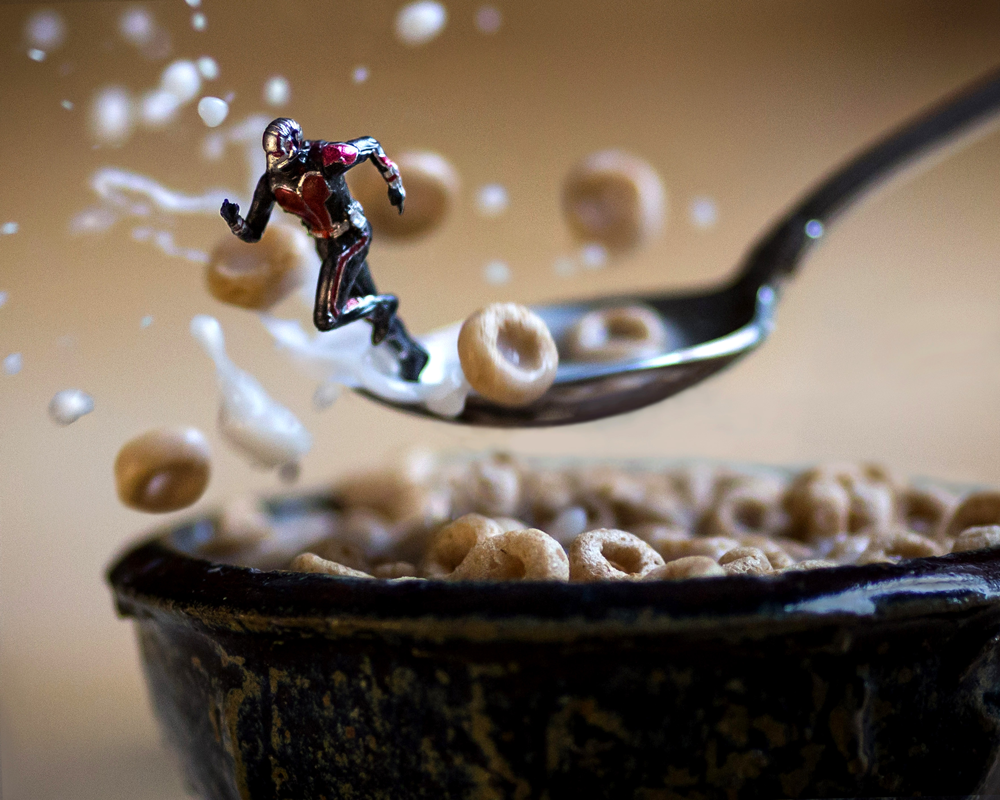
PI: What are some of your favorite fandoms?
MW: I may lose any geek cred I may have had, but I don’t really have any favorites and I don’t really follow anything too closely. I’m not a crazy fan of any particular property. I do like Star Wars, Marvel, and a lot of the other cool properties, but I’m probably just like any other person who enjoys watching them when they come out, but I’m not living and breathing it otherwise.
The whole storytelling aspect is what really drew me into toy photography and what continues to hold me. For example, a lot of toy photographers started off as toy enthusiasts, and their photography began as a way to share their collections with other toy collectors. I came at it simply as a person who really loves to tell stories. I had all of the camera gear and none of the toys, so for me it’s always been about telling stories and not so much about any particular fandom or property.
PI: Do you have anything else you’d like to add?
MW: Anybody that has any curiosity or interest in toy photography should try it because it’s just pure and simple fun! There’s people out there doing it with cell phones, point and shoots, and with full blown professional gear. In the end it’s just a way to have some fun and play with toys. If you’re interested in trying it, go for it! First and foremost, come up with some good ideas and stories. Don’t worry about going too crazy with the special effects or techniques because that comes with time and practice. I would much rather look at an image with a great story that isn’t executed perfectly than an image with great effects but with no story. Make me laugh, make me feel something.
To see more from Mitchel Wu, check out his website, Instagram, and Facebook.
